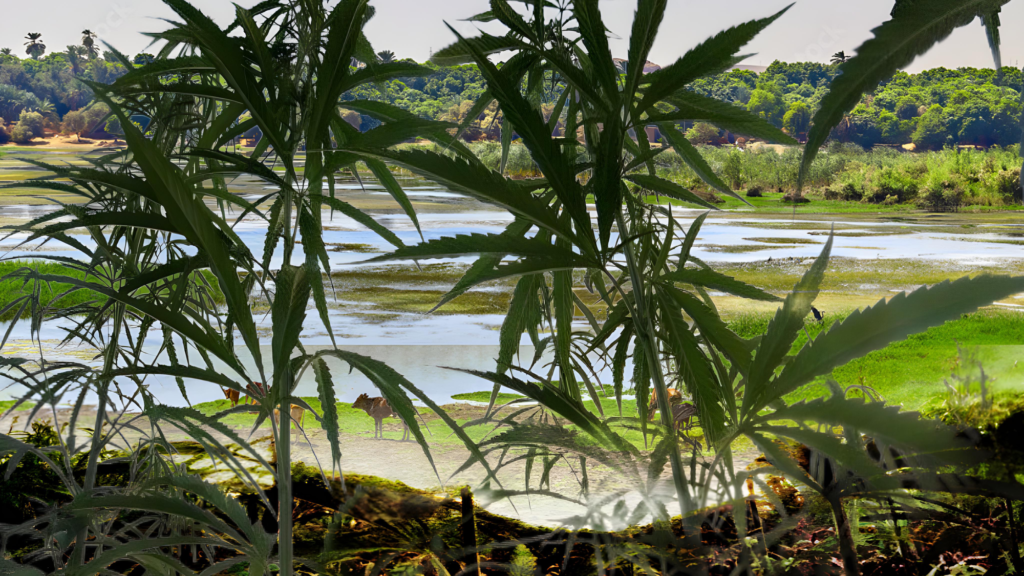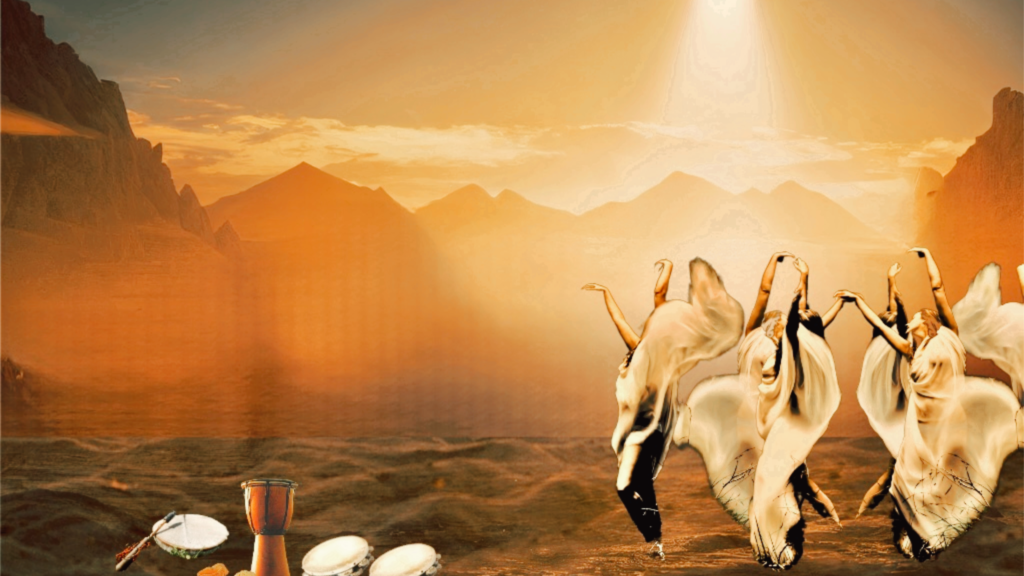As we prepare our homes for Passover this year, removing every trace of baked goods (by binge-eating if need be), I’m leaning into the mitzvah to tell the story of our liberation from slavery in Egypt “as if” it happened to us; on Passover we are commanded to tell this story not as descendants but as survivors of Pharaoh’s tyranny.
As we cope with a global movement calling for the destruction of the only Jewish nation, I imagine I’m not the only Jew looking forward to some cathartic consolation in LARPING the Exodus story this year.

In the spirit of our tradition, CJM offers this canna-Jewish reading of the Exodus that recovers the role played by kaneh bosem (Eng. cannabis) in the events leading up to our liberation through deduction, speculation and the light of Jewish herstory.

Recall that Miriam—our first woman prophet—was Moses’ older sister. When Pharaoh decided to kill the first born sons of Israelite families as a matter of state policy, Miriam had the courage and ingenuity to place baby Moses in a basket that served as a vessel to carry him down the Nile and save him from the genocide. Our question is: what kind of basket was this, and where did she get it?
We know that cannabis was cultivated in Ancient Egypt and grew in the Nile Delta Valley, and was used in the production of ropes, sails, and fabric. Thus, it’s fair to surmise that Miriam placed Moses in a basket woven with hemp, cultivated in her private garden of kaneh bosem near the river.

After Moses grew up as a member of Pharaoh’s family, and learned his true identity, he observed an Egyptian beating on a Hebrew slave and—in a moment of rage—killed the guy oppressing his brother. Racked with shame and fear over Pharaoh’s wrath, Moses fled Egypt for the Sinai Valley. He settled in, had a family and tried to forget his origin story.

Moses’ return was inspired by his experience on Mount Horeb when he stared at a “burning bush” and heard the Lord speak to him through the flames: “I am that I am.” Then the voice commanded him to return to Egypt and lead his people to freedom.
With reference to this iconic image, it’s important to note two facts:
- The Hebrew word translated as “bush” is seneh (סְנֶה), which refers in particular to brambles or brush, like the stalks of kaneh bosem.
- The Sinai Valley is known for exceptionally potent herb with energizing, sativa-like effects.
When we take these points into account, we can understand why I’m not the first Jew to suggest that Moses had actually been stoned when he heard the Lord speak through flames.
 This canna-Jewish perspective affirms our freedom while respecting kaneh bosem as a gift from Hashem that allows us to be in-dialogue with ourselves, learn from the past, and be accountable for our actions.
This canna-Jewish perspective affirms our freedom while respecting kaneh bosem as a gift from Hashem that allows us to be in-dialogue with ourselves, learn from the past, and be accountable for our actions.
With his newfound resolve, Moses returned from exile and demanded that Pharaoh: ”Let My People Go!”—from several feet away.
Every time Pharaoh refused, he provoked a plague on his people, who suffered a series of X-files involving swarms of insects, dead animals or mass contagion. He didn’t care, hellbent on degrading the strength and vitality of the Israelite people even at the cost of famine and the mass death of Egyptians.

After a series of apocalyptic scenes that destroyed his land and decimated Egyptian families, Pharaoh finally agreed to release his slaves and let Moses lead the Israelites to the Promised Land.
But when the hour arrived, Moses was pretty disorganized, and hadn’t prepared for their speedy escape (perhaps he’d assumed there’d be time to light up a stalk of kaneh bosem and talk to the Big Guy again?). So we left before the bread had time to rise, which we commemorate by eating unleavened bread called matzoh and refraining from any foods with chametz (leavening agents like yeast).

After Pharaoh changed his mind and sent his army to kill the fleeing Israelites, they were saved when the Red Sea parted, and Moses and Miriam led them across to freedom before the water returned (drowning the Egyptian army).
Though usually excluded from our recollection of the Exodus told during the seder, our ritual meal, the story of Miriam’s fate after she helped deliver her people feels important to include this year.
As soon as they crossed into freedom, Miriam gathered all the Israelite women to celebrate with dancing and drumming.
“Then Miriam the prophet picked up a hand-drum, and all the women went out after her in dance with hand-drums.” (Exodus 15:20)
 The Lord took exception to Miriam’s presumption that her sapphic party was kosher and righteous, for she was not Moses, and lacked the authority to set social policy (e.g. host a party that excluded men).
The Lord took exception to Miriam’s presumption that her sapphic party was kosher and righteous, for she was not Moses, and lacked the authority to set social policy (e.g. host a party that excluded men).
Then Miriam went R.B.G. and challenged her brother’s singular claim to authority:
“Has the Lord spoken only through Moses? Has he not spoken through us also?” (Numbers 12:2)
Though her brother Aaron joined her protest against patriarchal presumption, the Lord reserved his rage for Miriam and struck her with leprosy. Her brothers pleaded with The Almighty to reconsider. The Holy One heard their pleas and put Miriam in solitary to repent and purify her soul; that went about as well as you’d predict with a headstrong, fearless, proud Jewish woman. Condemned and abandoned by Hashem, Miriam refused to speak to Him ever again.
As we mourn our Israeli sisters murdered by Hamas and resist the effort to erase their suffering from history, I’m taking strength in Jewish herstory that reveals our Sister-Prophet Miriam as the unsung hero of the Exodus and Queen Mother of the House of Jewish Women.

This Passover season I’m having psychedelic visions of a “Jewish Women’s Tabneracle Collective” where we can gather to honour Miriam’s tradition and attend to our trauma—re-produced every generation by abandonment and erasure—with community, kaneh bosem, dancing and drumming.
In order to stay connected with the Canna-Jewish community, sign up to receive The Canna Jewish News delivered right to your inbox. To learn more about the role of cannabis in the Jewish tradition, check out our new online course The Jewish Relation to Cannabis, sold with the Yeshiva Subscription to Cannabis Jew Magazine.








